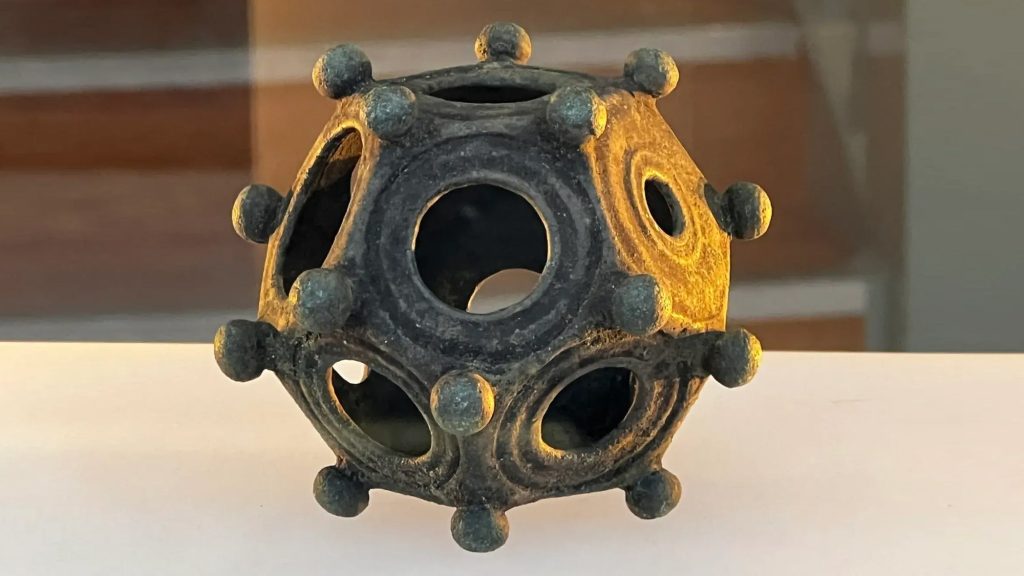With a hollow center, 12 sides, and no known uses, Roman dodecahedrons are still a big mystery in archeology. They don’t seem to be used for grooming or personal enjoyment and only 33 of these objects have been found in Great Britain’s Roman ruins. A recent discovery in eastern England is attracting attention in the Roman dodecahedron study world. The Norton Disney Dodecahedron is one of the largest and newest Gallo Roman Dodecahedrons ever found and is currently on display at the National Civil War Centre, Newark Museum in Newark, England. It will also be featured in an exhibit beginning on Saturday May 4 at the Lincoln Museum in Lincoln, England.
The strange object was found by a group of amateur archeologists in June 2023 in the village of Norton Disney in the Midlands of eastern England. The mysterious object was sitting among the ruins of a Roman pit and was likely placed there about 1,700 years ago. It was discovered “in situ,” or deliberately placed among 4th Century CE Roman pottery in some sort of hole or quarry. More archeological excavation is needed to clarify exactly what this pit was used for.
The ancient Roman villa had wine fountains.]
The cast bronze object is hollow in the middle and is about the size of a clenched fist. It has 12 flat faces that are shaped like pentagons. Each face has a hole in various sizes and all 20 corners have a knob. At about three inches tall and half a pound, it is one of the largest of these mysterious Roman objects ever found.
According to the Norton Disney History and Archaeology Group, it is considered a copper alloy object that is made up of 75 percent copper, seven percent tin, and 18 percent lead. It is also the only example of one of these objects found in England’s Midlands and is an example of very fine craftsmanship.
Lorena Hitchens, an archeologist specializing in Roman dodecahedrons, told The Washington Post, that “it’s a really good dodecahedron,” after examining the object. Preliminary dating estimates believe that it was crafted sometime between 43 and 410 CE, during the later Roman period.
Despite this strong find, historians and archeologists still do not know exactly what these unique objects were used for.
“The imagination runs wild when thinking about what the Romans may have used it for. Magic, rituals or religion–we may never know,” Norton Disney History and Archaeology Group secretary Richard Parker told the BBC.
Known Roman literature does not have any descriptions or drawings of dodecahedra. The objects were not of a standard size, so the Norton Disney group does not believe they were used to take measurements. They also do not have signs of wear and tear the way blades do, so they were not tools.
“A huge amount of time, energy and skill was taken to create our dodecahedron, so it was not used for everyday purposes, especially when alternative materials are available that would achieve the same purpose,” the Norton Disney History and Archaeology Group stated.
The Roman Britons were very concerned with hair removal, and it is evident in artifacts.]
There are 130 known instances of these items have been discovered in the expansive Roman world. Most of them have been located in the northern and western provinces of Rome close to the Alps in present-day France and Germany. In Britain, there have been 33 known instances of Roman dodecahedrons that have been unearthed. This particular instance was discovered near a statue of a deity riding a horse in 1989
“Roman society was rife with superstition, which was a frequent occurrence,” stated the Norton Disney History and Archaeology Group. “Our current working theory is a potential connection with local religious practices. However, further investigation is needed.”
The group plans to return to the excavation site where the dodecahedron was discovered sometime this year to continue the dig.









